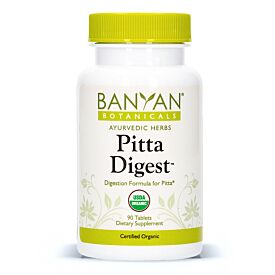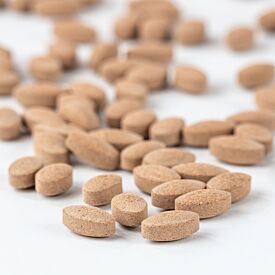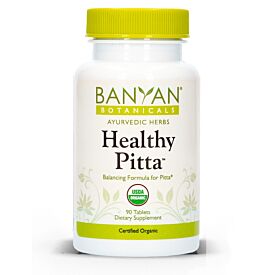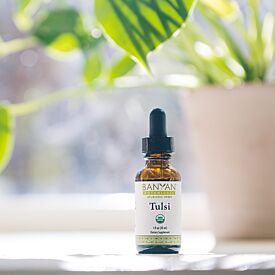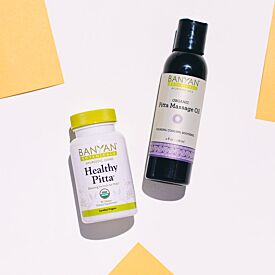A Powerful Pranayama for Keeping Cool
For many of us, this has been a summer unlike any other. Influenced by the continued spread of the coronavirus pandemic, our routines have shifted drastically and many typical summertime activities, like days at the beach or social gatherings in the park, have been replaced by social distancing and time spent indoors.
While some are still finding safe and responsible ways to get out into nature and enjoy the sunshine, others may be relying on fleeting moments of sunlight pouring through a window to soak in those moments of luscious summer radiance.
Either way, as this strange and challenging time continues to affect us all, Mother Nature is carrying on with her dance through the seasons and there is no denying that we have arrived at the peak of summer’s glory.
Summer is the pitta season: the brightness, the heat, and the sharpness of summer reflect the qualities of pitta, which rise externally in the environment as well as internally within our bodies and minds at this time of year. So whether you find yourself out basking in the hot sun or sheltered inside, you can be sure that pitta dosha is accumulating.
As summer eventually turns to autumn, an excess of pitta dosha will potentially cause discomfort and imbalance in the body. With this change of seasons, vata dosha increases, and elevated vata—the energy of movement—will distribute that excess pitta to the weaker areas of your body where disease can easily manifest.
Luckily, there are many simple choices you can make to keep pitta in check in the summer. If you are fortunate enough to be venturing out into the sunshine, it’s recommended to always wear a hat, avoid the intense heat of the midday sun, and spend time in the shade if you are going to be outside for a while.
Making beneficial dietary choices will also go a long way to cool and pacify pitta’s heat. Minimize your consumption of pungent foods like radishes, hot peppers, and onions, and favor cooling foods such as cucumbers, coconut, and raw salads. Reduce or leave out your consumption of meat, refined sugar, caffeine, and alcohol—all of which will increase pitta. Herbal formulas like Healthy Pitta or Pitta Digest can also keep pitta in check.
These basic lifestyle and dietary choices are very helpful for maintaining balance throughout the summer, especially when paired with a regular pranayama practice.
Prana is life force. It is the energy that creates and sustains us. When prana flows easily through all parts of our being, life unfolds with greater ease. Pranayama, one of the eight limbs of Yoga, is a powerful set of practices that harnesses and directs prana to flow the way it is intended.
A consistent and balanced pranayama practice can correct emotional and physical disturbances, calm the doshas, and support spiritual awakening.
Sheetali, also known as cooling breath, is a simple, calming pranayama that you can add to your day when you need more cooling energy in your body or mind. The word sheetali comes from the Sanskrit root sheet, meaning “cold” or “frigid,” and sheetali translates roughly as “that which is calm, passionless, and soothing”—an excellent pranayama for settling and removing excess pitta!
Sheetali pranayama is pacifying to pitta and neutral towards vata and kapha, making it a helpful choice for everyone, especially when in times of excess heat. For instance, after prolonged time in direct sunlight, in extremely hot weather, after intense physical exertion, during hot flashes, or in moments of heated emotions.
Set aside time every day to practice sheetali consistently during the summer months and you will notice a powerful cooling and calming effect on your body, mind, and emotions.

How to Practice Sheetali Pranayama
Sheetali pranayama is best practiced on an empty stomach—wait at least three hours after eating to practice.
- Sit with an upright spine. Close your eyes and feel the movement of your breath.
- Curl the sides of your tongue and breathe in slowly, pulling the air across the surface of your tongue like you are breathing through a straw. If you cannot curl your tongue, bring the tip of your tongue to touch the back of your bottom teeth, open your lips and teeth slightly, just enough to inhale across the surface of the tongue. This variation is called sitkar.
- Bring your right hand into Vishnu mudra: index and middle finger pads touching the pad at the base of the thumb. Close your right nostril with your right thumb and exhale smoothly and slowly out the left nostril.
- Inhale again through your curled tongue, exhaling through the left nostril. Repeat three, six, or up to twenty times if you feel overheated.
- Sit in meditation for at least five minutes after your pranayama practice to allow the soothing benefits of the practice to be integrated.
After a period of regular practice, a breath retention may be added. Work with an experienced teacher to establish the best practice for you at any given time.
One of the greatest values of an Ayurvedic approach is simplicity. No matter what is going on in the world, our personal lives, our environments, and our bodies, the act of making simple shifts in diet and lifestyle can have a powerful impact on our health and well-being.
We hope that this simple pranayama practice will bring some peace, calm, and balance to your summer, in the moments that you need it the most!







